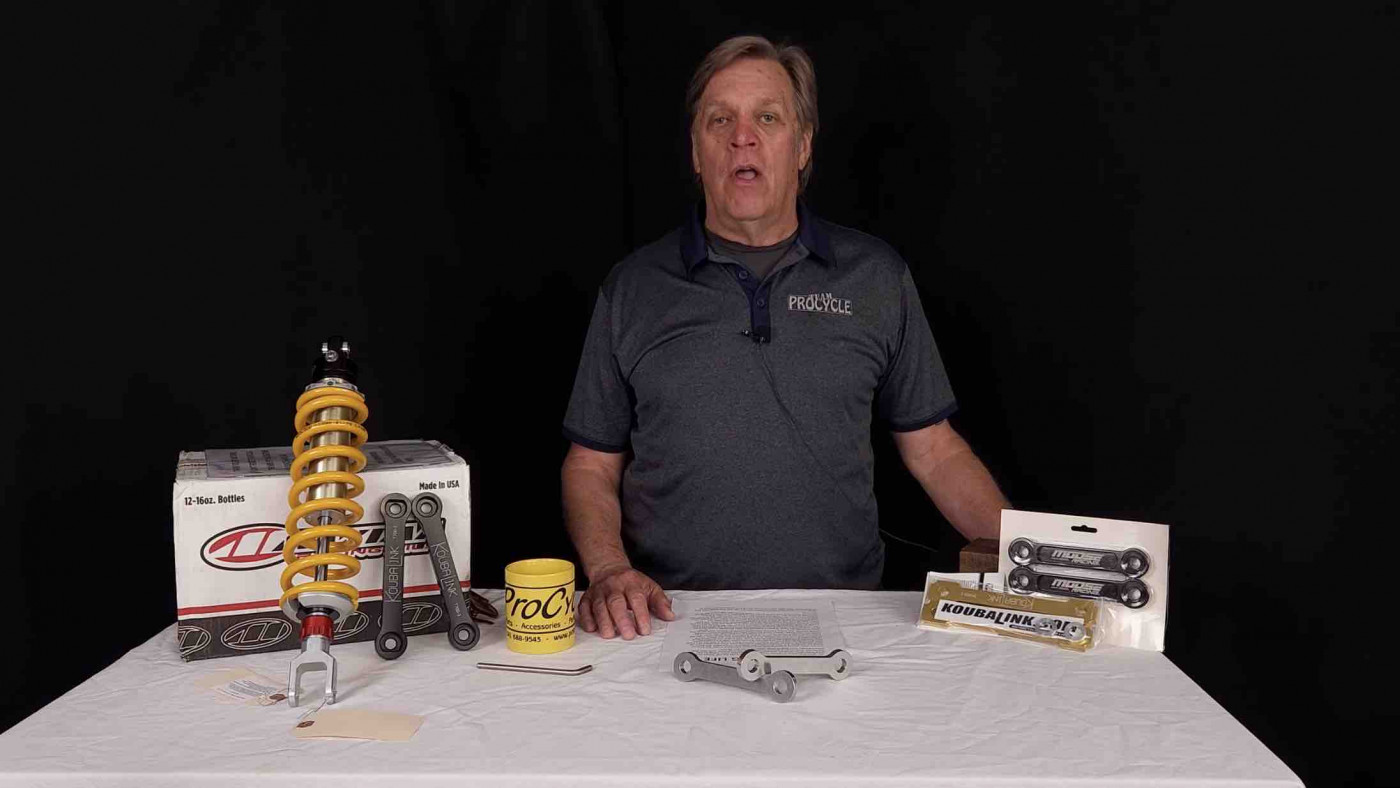We agree that many of today’s Dual Sport motorcycles are tall. It can be tough, even for average-height riders, to reach the ground when stopped. It can also be awkward to dab or paddle when riding on bad terrain. A common approach to remedying this problem is to lower your bike with lowering links. Let’s look at what happens when you do this.
In a nutshell, adding lowering links lowers your bike's frame by the amount noted for the links. So a 1” link kit lowers the chassis by 1” in the back. However, there are some other consequences to consider. The shock you have still has the same range of motion, and the shock spring still compresses and extends at the same rate, but the lowering links change the fulcrum point on the suspension so there is more leverage on the shock. This makes the shock and spring feel "softer" (perform like it is of a lower rating). Additionally, the changed geometry will also increase the rear wheel travel and, along with the "softer" spring, make it easier for the rear wheel to bottom out against the inside of the rear fender. You may need to switch to a firmer rear shock spring to counter these effects.
If you’ve lowered the rear, you will also want to lower the front forks by the same amount so that your bike keeps the same profile as before. The most common way for a small (1") adjustment is to slide the fork tubes up the triple-clamps. Most bikes will have enough extra spacing between the front tire and fender beyond the amount needed for full suspension travel for a small change, but you need to check this spacing to be sure. Otherwise, you may find yourself bottoming out in the front.
So before lowering your bike, make sure you've planned for all the other adjustments you'd want to do.

